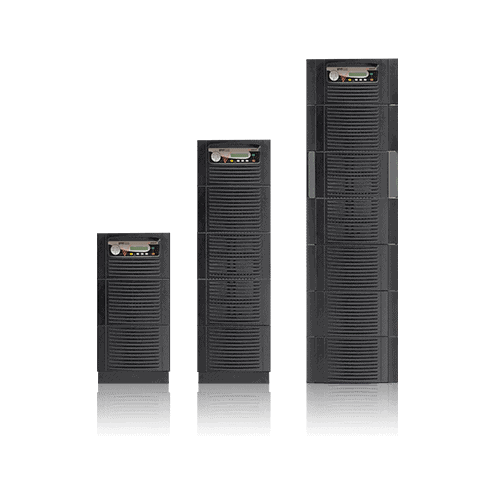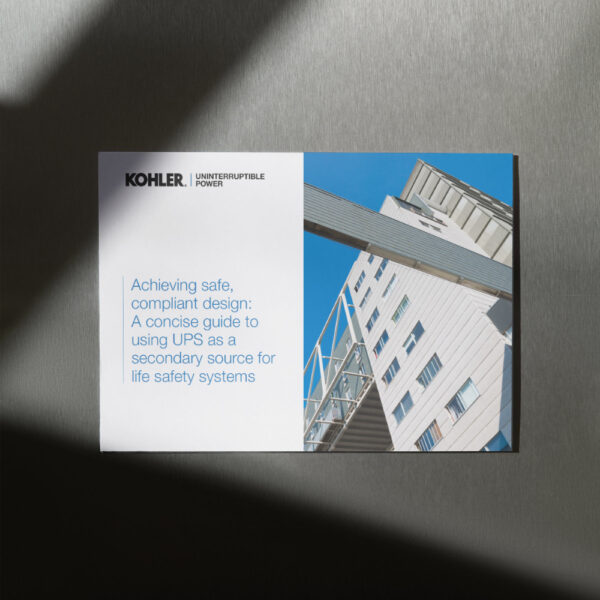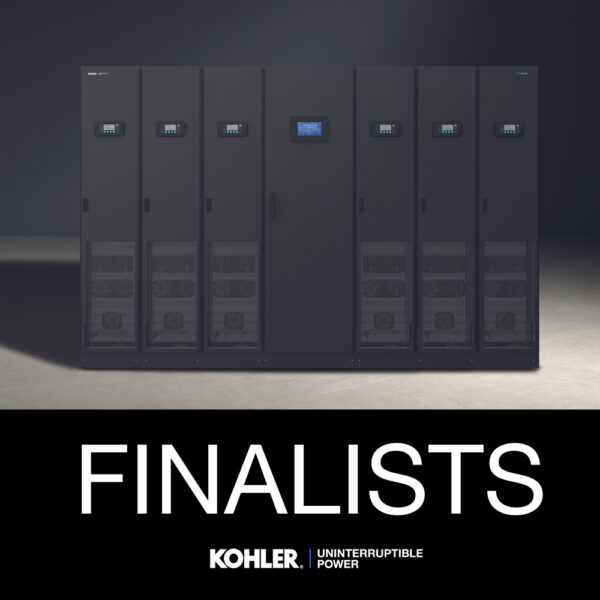Large-scale enterprises typically use data centres to handle their IT load – and these will have large-scale UPS systems to provide conditioned AC power with high availability and efficiency. What happens, however, for smaller organisations whose load and power requirements are similarly critical, yet cannot warrant a full data centre?
In this article Alan Luscombe, director at KOHLER Uninterruptible Power Ltd., a KOHLER company, looks at how such enterprises can achieve the power protection they need by specifying mid-sized UPS power supply systems that offer similar performance to their larger counterparts while being scaled to the parameters of a smaller environment.
Major banks and other organisations that run large-scale ICT systems have long recognised their systems’ critical role within the business. Accordingly they assign their ICT equipment to a professionally-run data centre with trained specialist staff. These data centres have integral UPS systems to ensure 24/7 power protection.
However, there are also plenty of organisations that depend equally on significant, business-critical ICT installations, yet are not big enough to warrant a dedicated data centre facility. Their need for utterly reliable, protected power, although smaller-scaled, is just as crucial. But without the data centre resource, they must provide this reliability from smaller UPS systems designed to match their server room, office or factory space IT installation.
Below, we look at the factors and priorities concerning users in these mid-sized UPS applications, and the UPS topology available to optimally address these power protection issues.
While clean power with the highest possible availability and efficiency remain as priorities, these benefits must be delivered from UPS equipment that is highly compact; additionally, if it is destined for an office environment, UPS installation should blend aesthetically and physically into the office space.
Easy UPS scalability is another important consideration. Within both IT and process-related environments, demand can change rapidly as new projects are initiated, more staff is taken on or new server technologies are introduced. An uninterruptible power supply with the ability to start small, yet grow rapidly and seamlessly in response to demand is essential.
Meeting the mid-sized UPS system’s criteria
Fig.1 illustrates a UPS system family that meets these criteria, ranging in capacity from 10kVA to 50kVA. These UPS units are available in three sizes, with a footprint of just 0.4m2 at 50kVA and power density of 100 kW/m2. This space-saving is an essential advantage in premium or space-constrained office and server room locations.
Fig.1: KUP’s KOHLER PW 5000/TP UPS system– an example of a mid-range UPS family
Each unit can operate as a standalone UPS system. However, more uninterruptible power supply units can be incrementally added in parallel, up to a maximum of 20, to become a multi-module UPS system. Units can be added like this simply to grow UPS capacity, but they can also be used to improve power availability by building in modular redundancy. Three 20kVA modules, for example, would provide n+1 redundancy for a 40kVA critical load.
When operating in a parallel system, any UPS module can assume the paralleling control ‘leadership’ role, which avoids a single point of failure in the parallel chain and ensures the highest possible reliability. This builds on the exceptional reliability inherent in the hardware, which incorporates redundant critical circuits (RCCs). RCCs duplicate all of the critical components and circuitry within UPS solutions.
With true online double-conversion Voltage-Frequency Independent (VFI) topology, the UPS family offers consistently clean power together with its system reliability and high power availability.
UPS battery autonomy, like power capacity, must be sized closely to the needs of the critical load without being excessive and wasting capital or floor space. Accordingly, UPS batteries should be easily scalable to track load changes. The KOHLER PW 5000/TP UPS system example’s three cabinet options accept different-sized UPS batteries, allowing the ideal capacity and autonomy selection for any given application of UPS power supplies. Additional, matching uninterruptible power supply battery cabinets are also available. Ripple-free, optionally temperature-controlled battery chargers protect UPS batteries, extending the life-time performance and reducing running costs.
These uninterruptible power supplies are handling significant power levels, so their energy efficiency is important. In fact, the KOHLER PW 5000/TP’s transformerless UPS technology achieves similar energy efficiency to that of larger UPS systems, with up to 95.5% being possible. Energy, cooling costs and the organisation’s carbon footprint are all reduced. A near-unity power factor means reduced-size input cables and switchgear, and lower UPS installation costs. The UPS technology also yields an outstandingly low THDi of <3% at 100% load, eliminating possible interference with other in-circuit equipment. It also avoids unnecessary over-sizing of gen-sets, cabling and circuit-breakers, and extends the lifetime of all input components.
Large-scale UPS systems with very high performance have long been available for applications such as data centres, as have low-cost, less sophisticated units for protecting single workstations. In this article we have seen how mid-sized processing equipment can offer the same power availability, quality, efficiency and autonomy standards as the larger installations, while being scaled down in both cost and size for an accurate fit with its smaller setting.
Follow us on LinkedIn for regular industry articles
For more information about the KOHLER PW uninterruptible power supply range or our UPS services please contact us on 0800 731 3269 or email [email protected].





